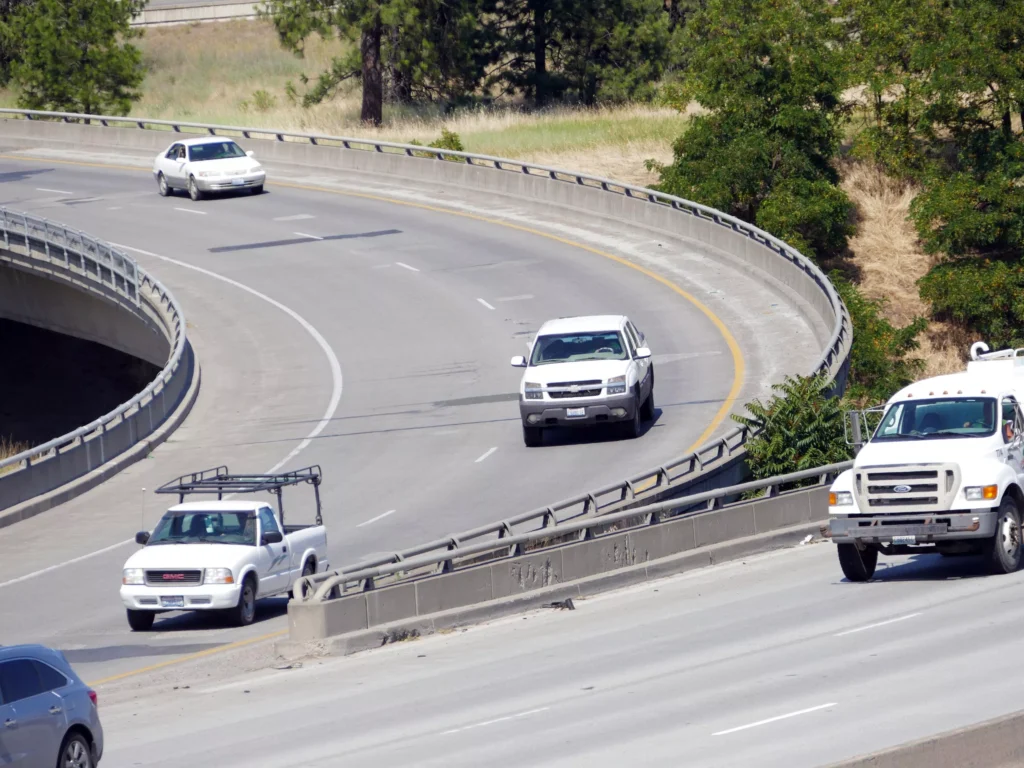Driving on the highway or freeway is a daily experience for many.
Whether you’re on a daily commute, on the highway, or just navigating the urban sprawl, the highway offers a unique environment with its own challenges and dynamics.
Aspects of driving along a freeway
In this study, we explore different aspects of road travel, looking at the nuances of road infrastructure, the importance of defensive driving, aspects of long-distance travel, and the role of new technologies in shaping the future of the road experience.
1. Understanding Road Infrastructure:
Road infrastructure is characterized by multiple lanes, controlled access points, and high-speed limits that create a dynamic environment for drivers. The design emphasizes efficiency and fluidity, allowing traffic to move quickly. Entrance and exit ramps make it easy for vehicles to enter and exit, while overpasses and underpasses maintain traffic flow. Understanding the unique characteristics of highway infrastructure is essential for safe and efficient navigation.
2. Multi-lane navigation:
One of the characteristics of road traffic is the presence of several lanes, each of which serves a specific purpose. The far right lane is usually reserved for slower-moving vehicles and the following lanes are suitable for progressively faster traffic. Navigating these lanes requires an understanding of the concept of lane keeping, where drivers are expected to choose the correct lane based on speed and planned movement. Highway etiquette dictates using the left lane when passing and returning to the right lane after passing.
3. Defensive driving on the highway:
Defensive driving becomes more important on highways, where high speeds and different driving styles are combined. Road conditions can change quickly, which requires constant vigilance and anticipation of potential hazards. Defensive driving principles such as maintaining a safe following distance, regularly checking blind spots, and adapting to changing traffic conditions are of the utmost importance for road safety.
4. Merging on the highway:
Merging on the highway is a critical part of road driving that requires discretion and compliance with traffic rules. Drivers entering the highway must yield to existing traffic, accelerate according to the speed of the flow and smoothly merge into the appropriate lane. Efficient merging not only ensures a smooth transition for the merging vehicle but also contributes to overall traffic efficiency on the highway.
5. Freeway exit:
Freeway exits require real-time signaling and maneuvering to move from fast traffic to slower local roads. Drivers should anticipate exit ramps, change lanes when necessary, and slow down to an appropriate speed to exit safely. Understanding the exit numbering system on many freeways will help you plan for future exits.
6. Aspects of long-distance travel:
Highways often act as long-distance travel channels, seamlessly connecting cities and regions. Long drives on highways require special attention, including regular breaks for driver fatigue, adequate fuel planning, and awareness of available rest areas. Anticipating possible traffic jams, road closures or adverse weather conditions is essential for a smooth and stress-free long journey.

7. Adaptation to traffic flows:
Driving on the highway requires a precise ability to adapt to traffic flows. Adhering to speed limits is crucial for safety, but it is equally important to regulate traffic at the prevailing speed so as not to disrupt the flow. The dynamics of the motorway can vary throughout the day, with peak times and traffic jams affecting driving speed. Adapting to these variations ensures a safer and more efficient driving experience.
8. Safety measures on the road:
Ensuring safety on the road requires compliance with safety measures and regulations. Seat belt use is mandatory and respect for speed limits, lanes, and road signs is essential. Road safety measures also include being aware of emergency exits, knowing the contact details of emergency services and carrying a basic first aid kit in the vehicle.
9. The role of new technologies:
The integration of new technologies reshapes the road experience. Advanced Driver Assistance Systems (ADAS) provide features such as adaptive cruise control, lane-keeping assistance, and collision avoidance to improve safety and reduce driver fatigue. Navigation apps provide real-time traffic updates to help drivers avoid traffic jams and find alternative routes. The continued development of autonomous vehicles promises to further change how we drive on the highways, potentially affecting safety, efficiency, and overall traffic management.
10. Road maintenance and construction:
Road infrastructure requires regular maintenance and occasional construction activities to ensure optimal performance. Navigating construction zones requires increased awareness, compliance with reduced speed limits, and response to lane changes. Keeping track of traffic updates for ongoing construction projects helps drivers plan their routes and prevent potential delays.
11. Environmental aspects:
Environmental aspects affect the driving experience on the road. The large number of vehicles on the roads increases air pollution and greenhouse gases. Initiatives such as carpooling, incentives for electric vehicles, and the promotion of public transport aim to solve environmental problems related to motorway traffic. As sustainability becomes more and more important, the role of highways in promoting environmentally friendly traffic practices also comes to the fore.
Conclusion:
Road driving is a dynamic experience that requires a combination of skill, adaptability, and safety. From understanding highway infrastructure and navigating multiple lanes to adopting defensive driving principles and adapting to new technologies, driving on the highway involves many different aspects. As cities develop and transportation technologies evolve, highway experiences continue to change, prioritizing efficiency, safety, and environmental sustainability. Navigating the highway isn’t just about getting to your destination; it’s about exploring the ever-evolving road-driving landscape.
